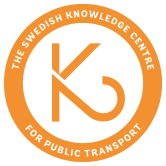For the provision of efficient and high-quality public transport services in rural areas with a low population density, the introduction of Demand Responsive Transport (DRT) services is reasonable. The optimal design of such services depends on various socio-demographical and environmental factors, which is why the use of simulation is feasible to support planning and decision-making processes. A key challenge for sound simulation results is the generation of realistic demand, i.e., requests for DRT journeys. In this paper, a method for modelling and simulating commuting activities is presented, which is based on statistical real-world data. It is applied to Sjöbo and Tomelilla, two rural municipalities in southern Sweden.
Modelling Commuting Activities for the Simulation of Demand Responsive Transport in Rural Areas
Sergei Dytckov, Fabian Lorig, Paul Davidsson, Johan Holmgren and Jan A Persson, International Conference on Vehicle Technology and Intelligent Transport Systems, November 2020
Publication type:
Other
Research areas:
Research project:
